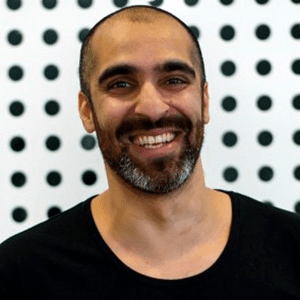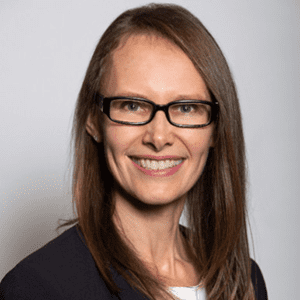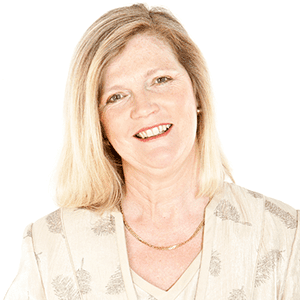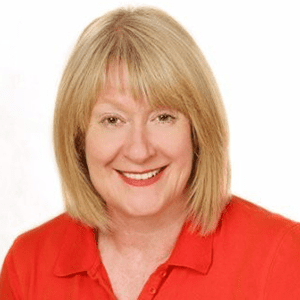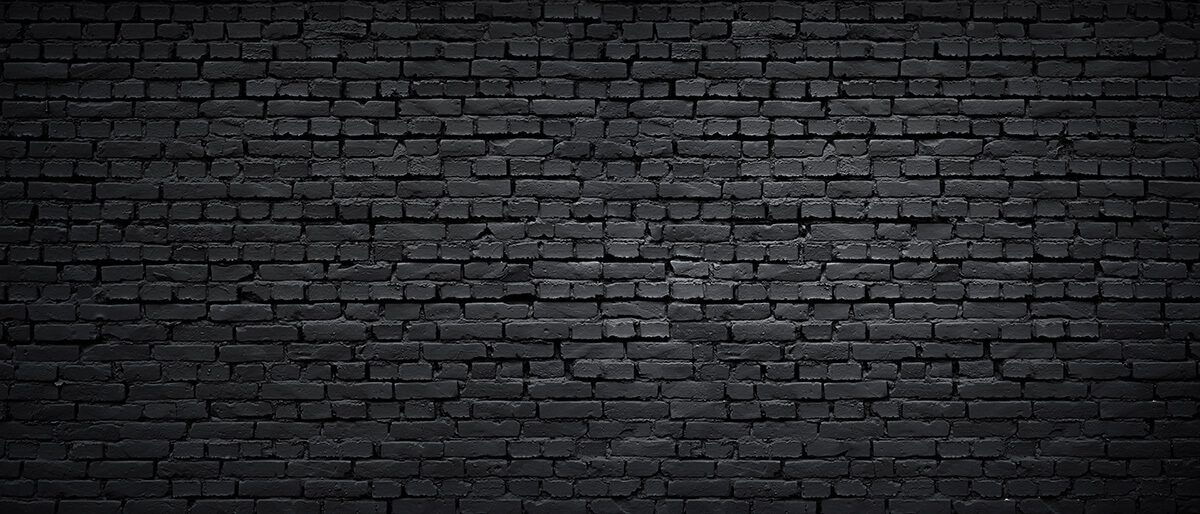
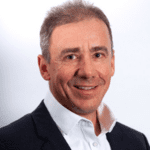
#20: Driving culture change ‘every climber every climb’
TEC Chair Todd Coates founding CEO of the globally renowned Bridge Climb Sydney across two decades – voted the best experience in Australia and 4th best on the planet.
Todd shares this leadership journey and how they created a winning customer-centric culture from start-up through to a crew of over 200 people.
‘Culture exists the moment the 3rd person walks in the door’. ‘Culture is’ whether you know it or not, so be intentional.
Stephanie: Hello and welcome to TEC Live. Stephanie Christopher here, Chief Executive of The Executive Connection. TEC connects CEOs, executives, and business owners to the world’s largest business leader network. My guest today is Todd Coates, who’s the founding CEO of the globally renowned BridgeClimb Sydney and worked there across two decades, voted the best experience in Australia and the fourth-best on the planet.
Todd has 35 years of leadership practice in theme and amusement parks, experiential attractions, tourism, new business and project development. He has expertise across multiple disciplines, both private and public companies with entrepreneurial, corporate, industry, and community stakeholders, including board and advisory experience with a range of industry and government bodies. Todd is adept in the design and building of new business cultures and the renewal of mature businesses. He experiences joy in helping CEOs and business owners to build their business, their teams and themselves. Todd, welcome to TEC Live.
Todd: Thank you, Stephanie. Excellent to be here.
Stephanie: So BridgeClimb, how was that working on … well, I guess it wasn’t so iconic when you started there.
Todd: It wasn’t at all. In fact, it was a blank sheet of paper. So what a wonderful journey to be part of meeting Paul Cave, who’d already worked on it for 10 years when I met him, to then taking that blank page with 1500 people, turning it into something that was quite extraordinary and just wonderful to be a part of.
Stephanie: When you started there, it had been going for 10 years already.
Todd: Paul’s journey in trying to actually-
Stephanie: Yeah, right.
Todd: … create this-
Stephanie: His vision for it.
Todd: … his vision for it. And I guess you’d say that Paul is a pure entrepreneur. And it was the Steve Jobs and Wozniak team. That classic duo where you have the entrepreneur, the outside person, and he needed the inside person to bring it together and I guess I was that person for him.
Stephanie: Have you always been the inside person?
Todd: Reflecting back, Stephanie, yes, I think so. I think I’ve always been about executing on an idea and making that idea real, and then finding the ways with the team to make it very special.
Stephanie: Where were you just before BridgeClimb?
Todd: I was working as CEO of Australia’s Wonderland.
Stephanie: Yeah, that’s right.
Todd: A wonderful theme park and wildlife park which is sadly in our past now in Sydney, but again, it was another special place.
Stephanie: I remember when it first opened, that was the ’80s, wasn’t it? When it opened.
Todd: It opened in 1985.
Stephanie: Yeah, and it was the big thing, because it was out West, as we would say in Sydney, and it was kind of the big thing to travel there. They certainly had people at that park from all over Sydney, didn’t they?
Todd: They did. They did.
Stephanie: Let’s get you to BridgeClimb. You got the train back across the bridge to the northside from Australia’s Wonderland, and there was the idea. You had to build a team I guess to-
Todd: We had to build a team and we also had literally a blank page. To populate that blank page, we had really our starting point was, ‘Well, what do we believe is going to be important about this?’ In particular, the word we would always use is what are the principles around this?
Stephanie: Yep. Tell me what you mean by principles.
Todd: Principles, it’s when you have a blank page, on anything, any task you set out to do, there’s no policy, there’s no procedure, there’s no manual. You end up relying on, ‘Well, what’s right? Why do we think that’s going to be right? What do we believe?’ Therefore, let’s make the decision based on those things. We came up with a range of those things for BridgeClimb.
Stephanie: Is that like values, or?
Todd: Well, values is something we might chat about a little bit later because I’ve been doing a lot of thinking about that lately, but it was probably more about what you might call foundations. So if you’re designing a building and I liken building a business to designing a business, or architecture, and then you go through the building process. You start with the foundations, if you like.
They’re the things that will never change. Or they won’t change without thinking about it very, very deeply. They’re the things that will remain a constant, and so we started with those things.
Stephanie: And give me an example of what a principle or a foundation principle might look like.
Todd: I’ll give one which will make absolute sense in the context of what we were going to do, which is nothing shall fall.
Stephanie: Love it.
Todd: From those three words, every part of the safety system and the workflow and the process always came back to nothing shall fall.
That’s a really nice straight example.
Stephanie: Well, it’s really illustrative, isn’t it?
Todd: Yes.
Stephanie: If you talk about climbing up a big bridge.
Todd: You have a picture in your head.
Stephanie: Yeah, that’s right. Yeah, that’s really good. I love it as you say, as a foundation principle, because it’s so business critical as well.
Todd: Yes. Another one would have been that we wanted this to be very precious, and what came out of that was an understanding of the iconic power of the bridge, and how special it was in the hearts of Sydney and people all over the world. From that came something, a principle that became our purpose, which is we’re here to make a hero of the bridge, and a hero of every climber. And that principle became our purpose which then informed again, how we put everything together.
Stephanie: So I really get the idea, you’ve said it about maybe three or four times since we started talking, starting with a blank sheet of paper. That’s obviously a concept for you, but because you were working with other people, you literally had something that looked like a blank sheet of paper to start working on. Is that where you always start?
Todd: That’s a really interesting question. I think in my head, with any new task, or any new project, I probably do look to that blank sheet, and not necessarily bring any luggage or from previous tasks, but okay, what is this task about? One thing we would always do at BridgeClimb is we’d always start each project with the phrase, ‘What’s the aim here?’ We’d always construct that first. Even before what are we going to do, and how are we going to do it? What’s the aim? We would always come back to that during the process. So are we achieving the aim and is it still the right aim? As we’d go through. I think I still do apply that process today, yeah.
Stephanie: I like that. What’s the aim here? Because it’s very easy to dive straight into the solution or execution, isn’t it?
Todd: It is. Particularly when you start to gather people around you and they’re all experts, they’re all subject matter experts in their field, and it helps them to keep their expertise in some sort of context.
Stephanie: As you built the team at BridgeClimb, and other teams that you’ve built as well, at what point do you start to have a culture?
Todd: At the moment, the third person walks in the room I think, and you immediately then have three people who each have their own internalised values and beliefs. And you start to work out how we’re going to do things around here, and who we are, and who we want to be.
Stephanie: Is culture as simply as people saying the way we do things around here, or what else makes up culture?
Todd: It’s such a wondrous beast made up of so many things, but I think one of the key aspects of culture to start with is that often culture is. It absolutely is, and so often it’s unintentional.
Stephanie: Tell me why you say culture is, because there’s no objective to that sentence, culture.
Todd: There is a way that we do things around here. There is a range of things we believe in. There is a way that we practice and do things. They exist, they’re real, and those things collectively make up our culture. I think our choice is, as leaders, and this has been my great, great learning through all the experiences, it can be unintentional, and then you will have results that you don’t necessarily control, and outcomes that you don’t necessarily desire, and we see that around us as citizens every day. We see failures, what we all perceive to be failures in the way things are done. I’ve learned that you can be very intentional and in fact, you should be very intentional.
Stephanie: Because what I’m taking from what you’ve said, Todd, is that culture is whether you like it or not, or whether you think about it or not, it still is. Is that right?
Todd: Yes, that’s exactly how it actually is. In any organisation. But we have a choice, to be very intentional about that, and back to that design architecture, we can think about what materials do I want to use? What quality will it be? I always start with, and customer first. Every culture, be it not-for-profit or social enterprise or a commercial enterprise would start with customer first before anything. And then build the elements from there.
Stephanie: And when you’re intentional about a culture, do you design it, back to your blank sheet of paper, but do you design it before you start hiring people to come into that culture?
Todd: Yes. In the case of BridgeClimb, we did, but then we had first, we had about 40 people in the initial intakes before we opened. We engaged them in the process, so the way I describe it, we had a selection of materials we could use to build our building, the foundations. And we could select from a purpose, we could select from a vision, a mission, we could select values that we might believe in, we could select principles and so on.
And what we did was we considered which of those suit our purpose? We chose three or four that we would use, and not all of them. We chose purpose, because we had one already, we were very clear on that, and we chose vision which was what’s our aspirational picture of the future that we’ll always be chasing? And we chose mission which is, ‘What are we going to do?’ Every day, every person, no matter what role we do, we’re going to be doing this thing. How do we make it pragmatic, real, down to Earth, common sense, grounded, try to avoid buzzwords and corporate speak?
You asked about those people, those 40 people were involved in creating the vision. They were involved in creating the mission and I look back on that time actually in reflection, it was an incredible thing to be a part of. With our mission, for instance, we had a night session where we asked the climb leaders, the first climb leaders, to get together in little groups of four. We gave them the parameters and then asked them to design a mission. And four of them did this little song and dance. They were climb leaders, right? They were very outgoing people. They sang this song and we were all sitting there, the leadership, and they said four words in the middle of this song, and the four words were every climber, every time.
Stephanie: Nice.
Todd: It was just like all the LEGO blocks clicked into place and we all looked at each other in the leadership and just went, ‘Wow, that’s it.’ We changed one word. It became every climber, every climb. And then no matter what role we did in the company, myself as CEO, or somebody working in the finance team, or human services, everything we all did was about in the end-
Stephanie: Every climber, every climb.
Todd: Make a hero of them. That was wondrous, and those 38 people who are out there could still look back and say, ‘We were part of that creation.’
Stephanie: What a powerful story. How many staff did you end up with at BridgeClimb?
Todd: Around 250.
Stephanie: So how did you manage to maintain or enhance the culture as more people came onboard?
Todd: Scaling up always changes things. It’s interesting that the foundations didn’t change over the 20 years, but how we applied them did. To think about your question, what became really clear as we scaled was that one person, two people, half a dozen people couldn’t be cultural champions on their own, and that we needed cultural champions everywhere in the business.
I reflect back and think that what we learned was is that we each have biases, we each have strengths that we can play to, and we actually learned the value or in our culture of creating champions around certain things. And their positional title or their hierarchical position in a traditional structure didn’t actually matter. It was the fact that they were the best in the business at that.
It helped us propagate this and they each held one of our cultural pieces in their hands. I can think of one of our team members who was probably the champion for customer. We had another team member who was the champion of safety, and all these various aspects. And then we found the best way to keep it together as we grew was to create some sort of rituals around it, and this was another part of the intentful thing that I think businesses can sit down and carve out some time to think about what rituals do we have that reinforce and celebrate how we do things around here? And praise it when it’s done right. And there were many examples of those. A small example, a detail that was so important though, was in written communication, in anything when any of us were standing up, it was always we, not I. And woe betide, and this is where some people found our culture very strong and we did have examples, there were causalities on the way, and there were some people who I would say colourfully ran screaming onto the street.
Stephanie: Hopefully not from the top of the bridge.
Todd: No. And decided, ‘That’s not for me.’ Because in the end, you do look for people who believe what you believe, and want to be a part of that. That ‘We not I,’ though, as a ritual, when you’re thinking your customer first and a separate climber, every climb, percolates up through everything you do, that one detail. Then at a broader level, a ritual would be what we would call celebration hour which was something we did every month and we got everyone together and you know what, Steph? This is what changed with the growth. Over the year, what celebration was in 1998, and what it was in 2018, it was so different. What we did at those celebration hours always changed, but everything we did in them was still about celebrating a customer story, or celebrating something someone had done in the business that might have come out of left field in a pocket, but still celebrated making it about every climber, every climb.
Stephanie: And how often would you have a celebration hour?
Todd: Once a month.
Stephanie: Once a month?
Todd: Yes, and that’s a good point because it’s really important with our rituals that we have, like everything else, we have a timing for budgets, and a timing for this activity, and that activity that it’s planned, intentful. Intentful.
Stephanie: Do you know, it’s interesting, I’ve been thinking about that and thinking and culture, Ashton Bishop who talks about customer centricity and surprise and delight, and talking about surprising with the unexpected, and do you know, something I’m really finding with my team is an unexpected ‘early mark,’ in inverted commas, to use a primary school term, I think has more impact than some rituals that we may or may not think about having.
Todd: I’ve heard Ashton speak about that too, and we actually did call it at BridgeClimb, surprise and delight. We equipped all of our frontline team members. I prefer to say equip rather than empower, I think equips a much more … We trained them that they could deploy surprise and delight. A bit like your example with the early mark which I love, and how powerful are such small things?
We had a climb leader who learned from one of his climbers on the climb that she absolutely loved Snickers bars. Talked about it a fair bit. They got back to the base, they were doing their photos, and the climb leader went down to the café and said, ‘Could I have a Snickers bar? I really want to present it to this customer.’ It not only blew the customer away, it blew away everyone else in the group, and I love it, too.
Stephanie: Surprise and delight. That’s good. I just realised I’ve blown it with my team now when they listen to this and they go, ‘Oh, she’s thinking about that whole early mark thing.’
Todd: There’ll be a queue.
Stephanie: There’ll be a queue at the lift. So, back to your champions, they knew they were a champion?
Todd: Yes.
Stephanie: So I would know I’m the safety champion?
Todd: Yes.
Stephanie: And everyone knew they were?
Todd: Yes. Thank you. That’s a really, exactly right. It was very important that people were celebrated for their particular strength. A lot of listeners would understand black hats, white hats, red hats, and so on from that framework of thinking. I can recall people in our organisation who were very strong black hats but we actually celebrated that. Because they were the ones, ‘I know who we need, to have a crack at this and see if it’ll actually work.’
Stephanie: Yeah, let’s get a naysayer in here.
Todd: Let’s get one of our black hats in here to work this one over.
Stephanie: It’s good, isn’t it?
Todd: Yeah.
Stephanie: And back to intentional, being really-
Todd: Intentional, and we would laugh about it, and they knew they were seen that way, but they celebrated it themselves as well.
Stephanie: So Todd, what I know of you, I get the impression you’re really good at this. What about when it goes horribly wrong? Did you have any times at BridgeClimb or somewhere else where it kind of went pear shaped, the culture?
Todd: Yeah, I can think of an example where I was working in a business where I came into let’s call it a legacy culture. Culture was, that existed. That was an enormous challenge for me. I had felt I’d learned a lot along the way, but I wasn’t prepared for the intensity of the work and the challenge of defining a culture we wanted to go to, a change of state.
And then having to work with people who couldn’t make that change, and in reflection, Stephanie, my personal reflection is common to many leaders. I didn’t face those people soon enough and didn’t move them from the culture soon enough. That was a powerful learning and we did achieve a state change, but not as far as I would have liked.
Stephanie: What stopped it?
Todd: I actually came back to BridgeClimb. And actually, the thing that brought me back to BridgeClimb was something that had happened in the culture. This is actually a really good little story. It was something that had happened in the culture while I was absent for about two years. I remember talking with Paul and then talking with the two key leaders who had been care taking the business for about six months. They had wrought something incredible, which completely re-energised me, and made me want to be a part of it, and this was the thing. They changed a foundation. The foundation belief or principle was because nothing shall fall, as we talked about earlier, our principle was we will dictate to you how you do the climb.
Stephanie: Yep, you have to wear this jumpsuit, you have to do whatever.
Todd: And you have to do it this way.
Stephanie: This way.
Todd: Exactly. 12 years into the business, the team had the confidence, the mastery, the expertise to think about customer first and go, ‘No, no, no, how can we do the climb for you?’ That one little flip changed the way we did everything for the next five years. Out of that came climbs celebrating every cultural belief and diversity, where we could create something around that cultural value. Out of that came climbs that would celebrate the values or practices of different corporate clients, or personal events, or people living with a disability. It was wonderfully renewing, and very exciting to be a part of. The credit for that goes to those people who when I was away, challenged a foundation.
Stephanie: Do you know, I was having a chat with my mentor about exactly this this morning. So, how can you still be in the business? Imagine if you didn’t have that time away, and you were still there, and the founding principle was yours, and your interpretation of it was nothing shall fall, therefore you’ll wear this terrible grey suit and you’ll walk up the bridge the way we’ll tell you to walk, how could you have as a leader, supported the team, enabled the team, to come up with that significant change while you were still in the gig?
Todd: You know, that is wonderful that you’re musing about that, and I think all of us after we’ve spent 5-10 years in business, it should be a compulsory thing we are walk into, or we are dragged into. In some way, force us to go back and start again with that blank sheet of paper, and get that mindset. I was fortunate to have that break, where that occurred. In other cases, I think you’re making a really important thought about how we do that with awareness, and intentfully as part of a company’s journey.
It reminds me too, of the thing that I learned most in the final five years that I was with BridgeClimb as well, coming back into that new culture. Because another change that had happened, I think this is part of the journey you’re describing, is you also in that process you described, can make that switch from being the person at the centre of the field, to use an AFL term, and Stephanie you know, I’m a little bit passionate about the Sydney Swans, but to use an AFL term, from going the person at the centre to a boundary umpire, where you’re doing, you’re making sure that if the ball comes off the field you pick it up and throw it back in, and say, ‘Okay, not out here, but keep playing the game.’
But you stand back and you let them play the game. That was the other switch I think that came from-
Stephanie: Your time out.
Todd: … that extraction out of the business, yes.
Stephanie: You came back in a different way, a different-
Todd: A completely different person.
Stephanie: … guise, almost, didn’t you? Yeah.
Todd: I was a completely different person, so there really were two very distinct phases in my journey with BridgeClimb. The key thing that I found in that last five years, and it’s something that exercises my mind a lot now, was that we had started the business with values as one of our cultural building blocks. As many organisations do, and then as I more observed and watched excellent people doing excellent things, and just excelling in every way, I had a few different realisations about values. The thought was that values are something we each have, they’re internal beliefs.
They’re there, and they guide our individual actions, and how we behave. As an organisation, though, you’ve got 250 people all with different internal values, how is it that they still work as a seamless whole? It got me to thinking about behaviours. Going back now 20 years, that’s, if I was starting again, I would start with behaviours.
Stephanie: Nice.
Todd: Not with values. I’ve been reflecting that behaviours really are values in action.
Stephanie: Yeah, well it’s what we believe, it’s how we show what we believe.
Todd: Exactly. I may not be able to change the way what you believe in, your own internal values, they’re very near and dear to you, but I can say if you want to be part of this group, organization, team, this is how you’ll behave. And if we do that intentfully, we can design a set of behaviours that will result in as an output, for the organisation, the values we want.
Stephanie: And then as a leader, and all through the organisation, it’s easier to hold people to behaviours than values. Because it’s hard to say to someone, ‘You’re feeling the wrong thing.’
Todd: Exactly.
Stephanie: And Brené Brown, who I keep quoting here after I saw her, says it really well. She gave the example of someone in her team who she said, ‘It’s okay for you to be angry in a meeting. It’s okay for you to be frustrated. It’s not okay for you to bang the table with your fist.’
Todd: Love it.
Stephanie: And that’s specifically about the behaviour.
Todd: Love it.
Stephanie: It’s good, isn’t it?
Todd: It is fantastic. I can think of other examples from BridgeClimb and then I can also … The two areas of research for me have been my own experience of BridgeClimb and then again studying the culture of the Sydney Swans. And their culture, the Bloods culture, as it’s called, was born in key behaviours. They actually did it in that order. They started with the key behaviours, but we talked about we, not I. And I love your example of how you feel’s okay, but we don’t bang the table around here. That’s not a behaviour we tolerate. I love that.
A similar one, actually more positive sort of behaviour at BridgeClimb was this one of we know every climber’s name and we use it. That came from the founding team as well, some climb leaders had a particular skill because they were professional guides. And the rest of us watched them and we recognised our name is the most powerful thing we own. That’s where we come from, and wow, and that became a mandatory behaviour. You know what was tough for the leaders? It was tough for me. When you have 250 people-
Stephanie: And you have to know everyone’s name.
Todd: You have to know everyone’s name.
Stephanie: Yeah. Do you know, it must have got tougher too, as tourism became a more global business, industry in Australia. How many people on a climb?
Todd: Well, it changed over the years. We started with 10, and then it became 12, and then it became 14.
Stephanie: So, 14 people anyway, if they’re 14 people with names that it might be the first time you’ve ever heard that name, that’d be really hard.
Todd: It’s extraordinary.
Stephanie: Did that go right through to the end?
Todd: It did. We obviously had come up with training and techniques. There was a lot of internal work done on that, but it still came down to the individual and were they prepared to when they joined? This is the behaviour we expect, that you will know every climber’s name, and you must perform that behaviour, or you shouldn’t be part of this team. It’s like your example. We don’t do it that way around here.
Stephanie: Maya Paleka who I spoke to here talks about guardrails, which I really like as well. Rather than policies and she talks about flexibility and the new way of working, but I love that model of guardrails, because I think that’s, no, that’s stepping outside. That behaviour is outside our guardrails.
Todd: I love that. That creates a really clear picture in my mind, as does being a boundary umpire.
Stephanie: That’d be even clearer for you, Todd. It’s your dream. Is that your dream job or in the centre?
Todd: Could be both. That’s a question for another time perhaps. Some of the key behaviours I remember from the Sydney Swans, that they formed in 2002, they put three words on a board, on a whiteboard. Disciplined, relentless, hard. They were what they wanted to be. One of the behaviours that came out of that that I just love is, ‘When it’s my turn to go, I go. When it’s my turn to get in and attack the ball, I don’t stand back. I go’ and I love that as a behaviour.
Stephanie: I love that, ‘When it’s my turn to go, I go.’
Todd: ‘I go. I go.’
Stephanie: ‘I own it. This is my thing; I’m going to do it.’ Wow.
Todd: Such a wonderful way of saying ownership, which is a value, and from all these things we get outputs, diversity, inclusion, trust, honesty, integrity, if we’ve framed our behaviours to get that outcome from the group.
Stephanie: Boy, lots to think about there.
Todd: Lots to think about.
Stephanie: What else? You alluded to some things you were going to come back to.
Todd: Well, behaviours was the key one. I’m fascinated and my research in recent times has been to look at the companies we all see as great as individuals, and then look at companies in all sorts of spaces and sizes. I am fascinated to see that we all will list out a set of values, but so, so very few have defined behaviours and then talk about those behaviours publicly. I think in building an intentional culture and designing the architecture of a business, it’s a really interesting space to explore.
Stephanie: What’s the main message for maybe a new CEO? New to a business, or new to the role. Let’s say a person who’s new to the role as CEO. Where do they start?
Todd: I think one of the things we neglect, one of the things we neglect when we’re starting out a business is something you said at the very start. We go straight to the solutions, we go straight to the how, the what, the processes, and so forth. At the beginning of anything, be intentful about one thing. That’s carving out the time to sit down and be intentful about the aim, the principles, those foundational elements. Think about what they are, and which ones will I use? All of thems probably too much, but which are the two or three that matter to me?
Above all else, this is the moment where you can decide who we are, who we want to be. And whether it’s starting a company or just starting a new task or project. My first piece of advice is let’s sit down, let’s carve out that time.
Stephanie: Blank sheet of paper.
Todd: As they did at NASA when the famous story, where they, ‘Oh, we’ve got six years to put a man on the moon. Oh dear.’
Stephanie: Thanks for announcing it.
Todd: Thanks, Mr. President. And they started with, ‘Well, okay, what’s the aim? A man on the moon. Okay, let’s start there. What will he need? Well, he’s going to need a spacesuit,’ and that was the point where they had to sit down and think, ‘Well, how are we going to do this?’
Stephanie: So there’s three things that I’m going to reflect on, but three things you’ve talked about today. One is a new word, and that word is intentful. And you know, I’m going to stick with it, because I think that we talk about intention, ‘Oh, what’s your intent?’ But I think we’re going to stick with this word we’ve created here, of intentful. Because it’s about being full of intent. Being very specific and clear and purposeful about what you’re doing, so I love that.
The second one is culture is, which sounds a bit John Donne, nothing else is. Culture is. Really good. That it’s everywhere. It’s all around you and there’s nothing you can do about it, or there’s something you can do about it, but you need to recognise it’s there, and that’s very good.
And the third one is a very powerful place to finish, Todd, that’s the idea of behaviours. That actually we can expect behaviours, we can give feedback on behaviours, we can talk about what behaviours really work for us, whether we’re still in the middle of the playing field, or we’re the boundary umpire on the outside kind of looking in a little bit.
But you’ve given us a lot to think about. You’ve given me a lot to think about, and I’ve enjoyed our conversation and Todd, thank you very much.
Todd: Stephanie, thank you. It’s been excellent.
Stephanie: That’s TEC Live for today. CEOs are in the business of making decisions and leadership is the art of execution. I’m Stephanie Christopher and look forward to talking to you next time.
